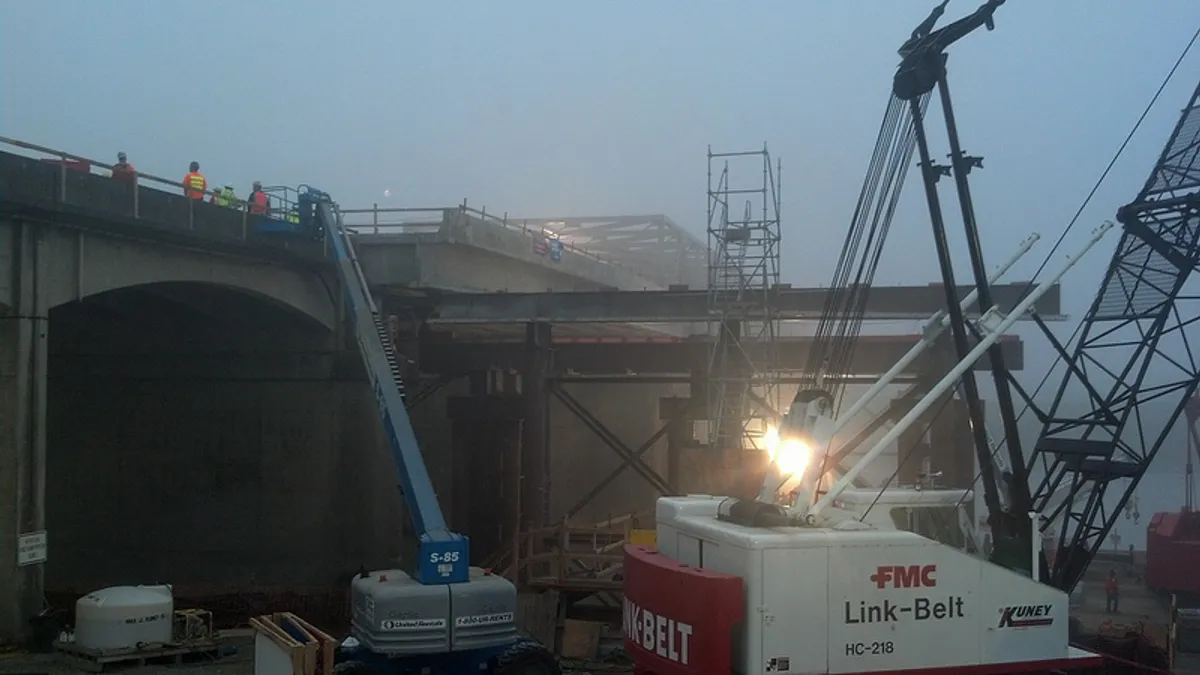Dive Brief:
- The U.S. hosted 54,259 structurally deficient bridges last year — nearly 9% of the country's 612,677 total bridges, according to the American Road & Transportation Builders Association's (ARTBA) 2018 Deficient Bridge Report. ARTBA based its findings on the U.S. Department of Transportation's 2017 National Bridge inventory database.
- The study found that there were 174 million crossings over structurally deficient bridges each day and these bridges were more than 25 years older than their projected useful lifespans. More than 30% of all bridges, including along the interstate, needed repairs.
- The rate of bridge replacement and repair slowed in 2017, and ARTBA said it would take 37 years to bring all bridges up to standard at the current pace or repair or replacement. The association said traffic bottlenecks, many of which are caused by subpar infrastructure, cost the trucking industry $60 billion a year, which translates to lost productivity, wasted fuel and higher consumer prices.
Dive Insight:
ARTBA's count of structurally deficient bridges has decreased from 58,495 in 2015 and 55,710 in 2016, though it would still cost upwards of $700 billion to restore or replace them all.
While the construction industry awaits further details from the White House on its now-$1.5 trillion infrastructure plan, a number of states have begun introducing their own bridge repair and replacement programs. And some of them are using technology to get the job done.
Since 2015, the Minnesota Department of Transportation (MDOT) has been using drones to assess the condition of some of the state's 20,000 bridges. Those drones take high-resolution images of trusses, piers, bearings and bridge dimensions to gauge safety, as well as to measure the rate of deterioration. This year, MDOT will determine which drones work the best and start developing a similar program to implement statewide.
AT&T has also jumped into the bridge assessment game and is testing a sensor system that can monitor the width of cracks, temperatures, changes in angles and other movements that could make a bridge unsafe. That information is then uploaded to the IBM cloud via AT&T's LTE network.












